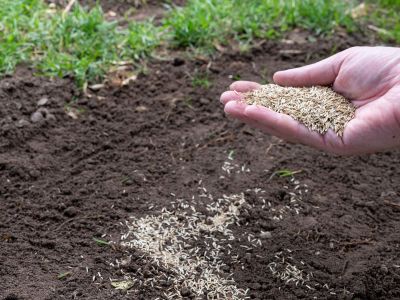Winterizing a Lawn
Before grass goes dormant and stops growing for the season, there are several important steps that will prepare it for winter and the next growing season.
Aerate. Every lawn needs aeration every few years and fall is the time to do it. This process breaks up the soil a little and allows more oxygen to get to roots.
Fertilize. Fall is also the right time to put down some fertilizer to keep the grass healthy as it heads into winter. The roots will store those nutrients while dormant and tap into them in the spring when it’s time to grow again.
Mow long. Continue mowing the lawn as it keeps growing but take the setting up so that the grass height is longer, about 3 inches (8 cm.) or higher. Do one final mowing before true dormancy sets in, though. If the grass is too long when it gets covered with snow, it becomes vulnerable to fungal diseases.
Pick up leaves. When leaves stay too long on the grass before dormancy sets in, they can kill it and also become a mushy mess. Rake and pick up leaves for composting throughout the fall.
Reseed. Fall is a good time to reseed any bare patches in the lawn because the weather is cooler and wetter.
Water as needed. In warmer climates where the grass stays greener in the winter, water when the weather is particularly hot or dry. The lawn won’t need as much as in summer, but some watering helps keep it healthy. Sow winter grass. In warm regions, you can let the lawn go dormant and leave it as is with occasional watering or you can sow a winter grass. A green lawn in winter is attractive but requires ongoing maintenance. Sow something like winter rye, which grows quickly and will add green to the lawn.
